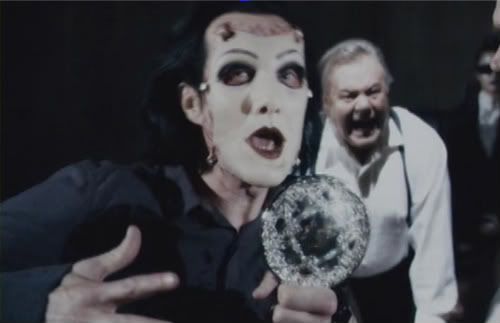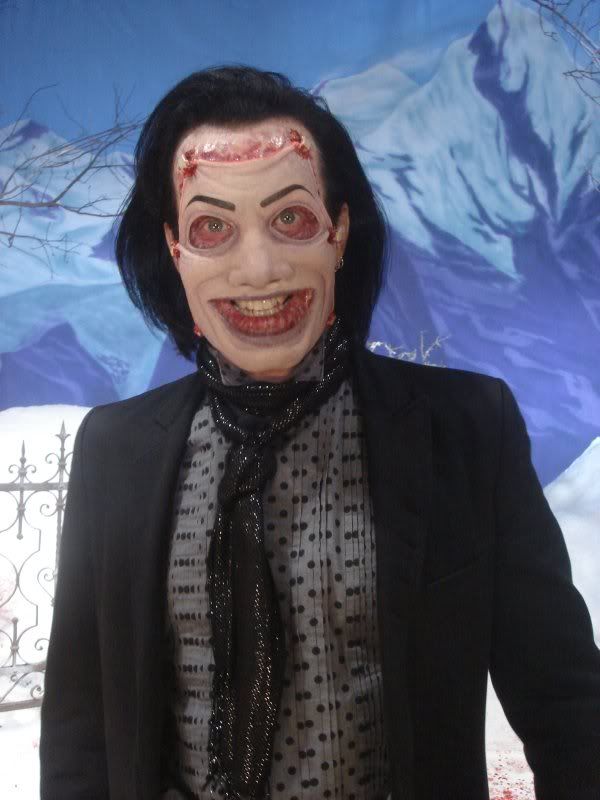Post by Ali on Oct 28, 2012 18:20:06 GMT -5
Most important prop is the primary mirror, used in every scene except Mark It Up and At The Opera. Oval hand mirror with a white back and gold handle/trim.

Secondary mirror, used in At The Opera, is a round silver hand mirror with raised designs on the back. It's quite a common pattern, you may find an exact match pop up on eBay.

In all scenes, he wears two small silver hoops in his left ear (see first photo).
For costuming purposes, many people do the mask with makeup, either drawing the six metal clips or gluing on items such as badge clips. Others use plastic masks, and the adventurous have created masks out of latex or other materials. If you are doing one particular costume for an event, the makeup method is probably the easiest. Using special effects makeup and latex is more difficult and time consuming, but the look is more impressive.
Pavi's actual face is a mess of scarred and peeled off skin, with six clips set into it. You can recreate this with latex prosthetics if desired. If you take that route, and will be using the clips functionally with your masks, you'll want to make sure that all the masks have their holes in the same place, and match the clip positioning with the mask holes.

For the actual masks, he wears a pretty and feminine face for much of the movie, the one that people most commonly recreate with makeup. (See mirror photos for reference.)
In Mark It Up, it's more masculine and older-looking.

For the opera scenes, he uses a more clownish grinning face.

I modified this tutorial with two different plastic bases to create my latex masks (a woman's face for the first two, and a Dia de los Muertos skeleton for the opera one). He rambles a lot, but it's a useful trick, and using the plastic masks is easier than face casting to make molds.

Secondary mirror, used in At The Opera, is a round silver hand mirror with raised designs on the back. It's quite a common pattern, you may find an exact match pop up on eBay.

In all scenes, he wears two small silver hoops in his left ear (see first photo).
For costuming purposes, many people do the mask with makeup, either drawing the six metal clips or gluing on items such as badge clips. Others use plastic masks, and the adventurous have created masks out of latex or other materials. If you are doing one particular costume for an event, the makeup method is probably the easiest. Using special effects makeup and latex is more difficult and time consuming, but the look is more impressive.
Pavi's actual face is a mess of scarred and peeled off skin, with six clips set into it. You can recreate this with latex prosthetics if desired. If you take that route, and will be using the clips functionally with your masks, you'll want to make sure that all the masks have their holes in the same place, and match the clip positioning with the mask holes.

For the actual masks, he wears a pretty and feminine face for much of the movie, the one that people most commonly recreate with makeup. (See mirror photos for reference.)
In Mark It Up, it's more masculine and older-looking.

For the opera scenes, he uses a more clownish grinning face.

I modified this tutorial with two different plastic bases to create my latex masks (a woman's face for the first two, and a Dia de los Muertos skeleton for the opera one). He rambles a lot, but it's a useful trick, and using the plastic masks is easier than face casting to make molds.
